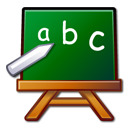 Påsken närmar sig och med den påskpyssel av olika slag. Det kan vara mer eller mindre avancerat, men för den som vill göra det lite enkelt för sig och ändå få fina resultat finns det en hel del att hämta från nätet i form av instruktioner och färdiga mallar för ‘paper craft’.
Påsken närmar sig och med den påskpyssel av olika slag. Det kan vara mer eller mindre avancerat, men för den som vill göra det lite enkelt för sig och ändå få fina resultat finns det en hel del att hämta från nätet i form av instruktioner och färdiga mallar för ‘paper craft’.
Ett populärt inslag har varit att vika pappersmodeller av olika djur eller dekorationer. En kanin kan till exempel passa till påsk.Mallar för kanin och instruktioner och för fler djur finns hos Canon Creative Park. Här finns det också arkitektoniska modeller, mer eller mindre komplicerade, om du tycker om att skapa miljöer och hus i miniatyr. Du kan också skriva ut (gratis) kort och färdiga etiketter och dekorationer av olika slag, för att klippa och klistra med eller använda direkt som de är.
The Graphics Fairy har till exempel många olika ‘printables’ och Everything Etsy tutorials och 101 Pretty Printables {free}
Free printable colouring pages
Easter Cards from Creative Park
Fler länkar och resurser finns på sidan Bild och Musik (Art & Music)

